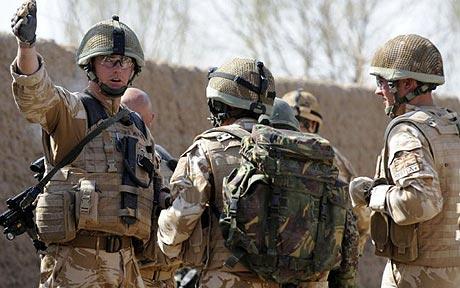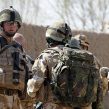
Perceptions of Success and Failure in ISAF Operations in Marjah, Afghanistan
Publication: Terrorism Monitor Volume: 8 Issue: 24
By:

NATO’s International Security Assistance Force (ISAF) launched Operation Moshtarak in the Nad Ali and Lashkar Gah Districts of Afghanistan’s Helmand Province in mid-February. The intent was to wrest it from Taliban control and create a “bubble of security” for local governance, described in an ISAF press release as “an Afghan-led initiative to assert government authority in the centre of Helmand Province.” [1] The operation involved the deployment of 15, 000 Allied and Afghan troops, among them American, British, Danish, Estonian, and Canadian elements from ISAF’s Regional Command South, as well as five brigades of Afghan forces drawn from the Afghan National Army (ANA), the Afghan National Police (ANP), Afghan Border Police, and the Afghan Gendarmerie.
Operation Moshtarak was meant to demonstrate several things. Its first priority was to restore Afghanistan’s ability to govern an area that had long functioned as a hub of Taliban and narcotics trafficking activity – a “bleeding ulcer”, as ISAF Commander General Stanley McChrystal recently called it (McClatchey Newspapers, May 29). The operation was also meant to be a litmus test for eventual reassertion of government control over neighboring Kandahar. Fighting in Marjah was intense in the first few days, but subsequently tapered off; some military officers expressed with breathless optimism their opinion that the Taliban had been routed or neutralized as a fighting force in the area. Continued general insecurity and violence, however—three months after the commencement of operations—suggests that reports of their demise were premature, at best. In April, one Taliban leader indicated a clear and deliberate plan in the face of a larger, better-equipped enemy: “We have only withdrawn tactically from some areas,” he said. “We never flee.” [2]
This makes it difficult to discern what positive lessons might be learned and applied elsewhere, such as the upcoming ISAF offensive in southern Kandahar (Daily Times [Lahore], May 26). Perhaps most frustrating for many observers is the manner in which political pressures have apparently skewed expectations of progress. One indicator of operational success, for example, has been the speed with which change can be effected – a vital characteristic of the proper employment of military force. More importantly, however, time pressures impose artificial benchmarks on such operations, where a high turnover of personnel has an elastic effect on how short and long term accomplishments are understood and planned for. Worse, the contours of “success”, particularly at higher levels of command, are shaped not by changing conditions on the ground, but by requirements set in the political capitals of NATO member states – which have consistently and simultaneously expressed an understanding that progress in Afghanistan will take time, but that they’d still like to get out sooner rather than later. For some ISAF troop contributors, deadlines for drawdown or complete withdrawal loom close, which leaves less time for mission personnel to rack up observable successes.
Another problem area rests with contentions over the identity of displaced persons. On the surface of things, hundreds of families have fled, claiming anxiety over the possible consequences of being accused of Taliban or al Qaeda membership by one side, or of collaboration with Allied forces by the other. Others, however, are less sympathetic. Haji Mohammad Zaher, District Governor of Marjah, for example, alleged “These families are mainly those who have committed major crimes in the past. Now when the area is under government control, they do not feel safe and flee the district.” The head of Marjah’s Public Order Department, Colonel Ghulam Sakhi, made a similar claim. He suggested that at least some of the displacement has little to do with the conduct of military operations in the area. “I can show you the list of 16 families who had migrated from Uruzgan during Taliban times and were active in the poppy trade… Now they have harvested their poppy and left.” [3]
If true, then some of the displacement is certainly consistent with ISAF aims. It is also corroborated in part by at least one report that the Marjah campaign has had a disruptive effect on the narcotics trade. One smuggler, Haji Abdul Qudos, observed that the operation had put a major crimp in drug shipment through Marjah, a major throughway. Interim subsidies to local farmers were making old ways of doing business increasingly expensive, but “he would be looking for other ways to get the drugs out, not ways to get out of drugs” (Dawn [Karachi], March 22).
None of this seems entirely relevant to the larger pool of civilians who may or may not have fled the area. According to Marjah resident Sardar Wali, the operation “was a failure as now both Taliban and foreign troops had caused trouble for the people” (Pajhwok Afghan News, May 4). As another former Marjah resident, Haji Aminullah put it, “We have trenches around us, set up by the rebels and foreign troops. As a result, we are confined to our homes” (Pajhwok Afghan News, May 26). In late May, a fresh wave of several hundred families (numbers vary) was noted to have left Marjah and Nad Ali for Lashkar Gah.
The short-term gains that come from disrupting the Taliban and narcotics trafficking out of Marjah and environs may well be trumped by the longer-term effect of driving up urban congestion in places like Lashkar Gah, the provincial capital, as well as neighboring Kandahar – not to mention the additional ill will towards ISAF that it will inevitably inspire. Displaced persons and refugees, apparently caught between a rock and a hard place, have the same effect as civilian casualties; the message they bear contradicts ISAF’s claim to be providing security to the population.
Despite good intentions and serious effort put into mitigating collateral damage, almost every negative outcome, from civilian deaths to population displacement to continued fighting, has been entirely predictable. This implies that a declaration of failure in Marjah now is just as premature as were some declarations of victory three months ago. It may also suggest a certain degree of willfulness on the part of NATO forces in Afghanistan: military operations, by their very nature, are about seizing and holding terrain. This can’t help but relegate the fate of human beings to secondary status, a condition that is fundamentally at odds with a population-centric counterinsurgency. It remains to be seen, on balance, how this will shape future perceptions of success and failure – particularly once ISAF turns to much more challenging objectives like securing Kandahar.
Notes:
1. ISAF Joint Command – Afghanistan, “Operation Moshtarak,” ISAF News Release (Kabul, ISAF Joint Command Public Affairs Office, 13 February 2010). Available at https://www.isaf.nato.int/images/stories/File/2010-02-CA-059-Backgrounder-Operation%20Moshtarak.pdf.
2. Hewad, “Taliban Defiant Following Marja Operation,” Institute for War & Peace Reporting /Afghan Reconstruction Report, Issue 358 (April 14, 2010).
3. Mohammad Ilyas Dayee, “Marja Residents Flee Unrest,” Institute for War & Peace Reporting /Afghan Reconstruction Report, Issue 361 (May 20, 2010).




